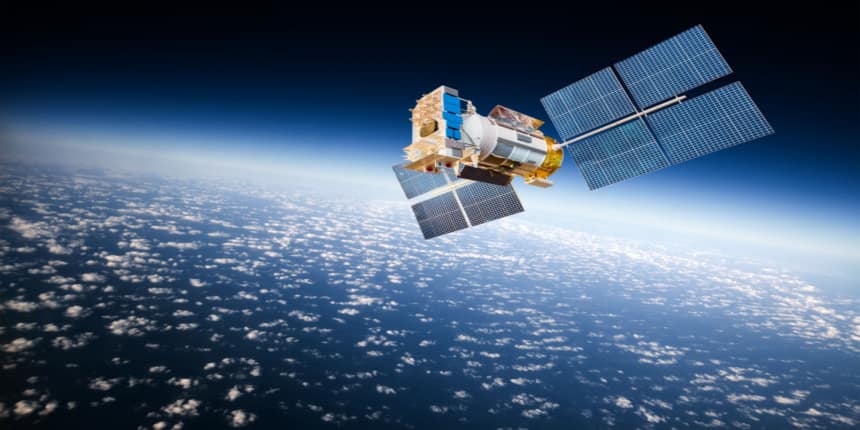INSAT Full Form
What is Full Form of INSAT ?
INSAT stands for Indian National Satellite System. The INSAT satellite is a Geostationary satellite series launched by ISRO to flexibly carry out operations for several departments, notably broadcasting, telecommunication, meteorology, and search & rescue. The Indian space, communications, meteorological, and radio-Doordarshan departments collaborated to create INSAT. By creating a warning system that helps people prepare for the crisis, INSAT has minimized the impact of any climatic disaster.
- What is Full Form of INSAT ?
- INSAT Features
- Satellites in Service
- Conclusion

As a widely used domestic system for communication in the Indo-Pacific regions, INSAT was launched in India in 1983. Launching the satellite INSAT-1B, this system brought about a significant transformation in India's communication industry and continues to promote more sustainable operations. To achieve the goal of this system more adaptably, GSAT-17 has collaborated with the INSAT satellite series and built 15 different operational satellites. More than 200 transponders make up the INSAT system, which creates a system to carry out operations including satellite news gathering, telecommunication, weather forecasting, television transmission, search-and-rescue operations, societal applications, and many more.
Since ISRO participates in the Cospas-Sarsat programme, the satellites also include transponders for receiving distress alarm signals for search and rescue missions in the South Asian and Indian Ocean Region. Additionally, several INSAT satellites collect meteorological data and observations to advance our understanding of the area's meteorological data. Some satellites are equipped with Very High-Resolution Radiometers and CCD cameras for metrological imaging.
INSAT Features
EDUSAT(GSAT-3), a satellite in the INSAT series, was launched specifically to provide educational services in India to improve and aid in the advancement of the education sector.
In addition to offering VSAT (Very-small-aperture terminal) service, INSAT has introduced a mobile satellite service.
Using ECD cameras in aircraft and high-resolution radiometers benefits meteorological services.
The deployment of the INSAT satellite series has improved television redistribution and broadcasting.
INSAT's telemedicine network aims to improve medical and healthcare services for vulnerable and disadvantaged persons living in rural areas.
Another major sector to use the INSAT system is meteorological purposes. The Indian Meteorological Department uses INSAT data to forecast the weather and track natural disasters, including floods, cyclones, and droughts.
Operations involving search and rescue also make use of INSAT. For operations such as finding missing people and aircraft, the National Remote Sensing Centre utilizes INSAT imagery.
Satellites in Service
INSAT Satellites that are in service
INSAT Series
INSAT-2E
INSAT-3A
INSAT-3C
INSAT-3D
INSAT-3DR
INSAT-3E
KALPANA-1
INSAT-4A
INSAT-4B
INSAT-4CR
GSAT satellites that are in service
GSAT Series
GSAT-6
GSAT-7
GSAT-8
GSAT-9
GSAT-10
GSAT-11
GSAT-12
GSAT-14
GSAT-15
GSAT-16
GSAT-17
GSAT-18
GSAT-19
GSAT-24
GSAT-29
GSAT-30
GSAT-31
Conclusion
By launching the INSAT series of satellites into orbit, ISRO has significantly benefited economic operations. The use of the INSAT system in space improves communication, meteorological data management, education, and television transmission. Each satellite in this series has distinctive qualities, and analyzing satellite data helps us learn more. Additionally, it has been noted that the INSAT satellite series has a significant impact on search and rescue operations following any disaster. It is clear that INSAT plays a significant role in the lives of Indians.